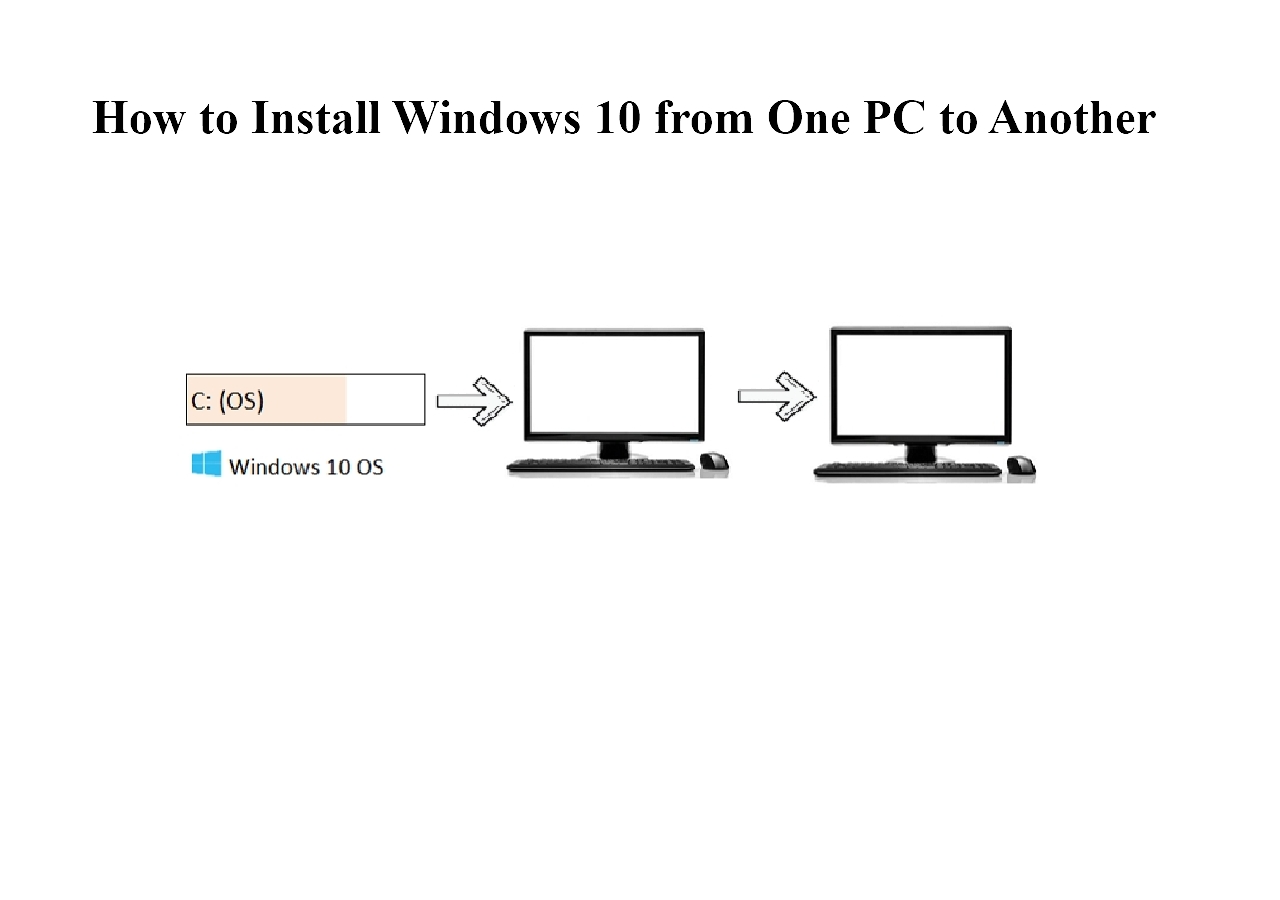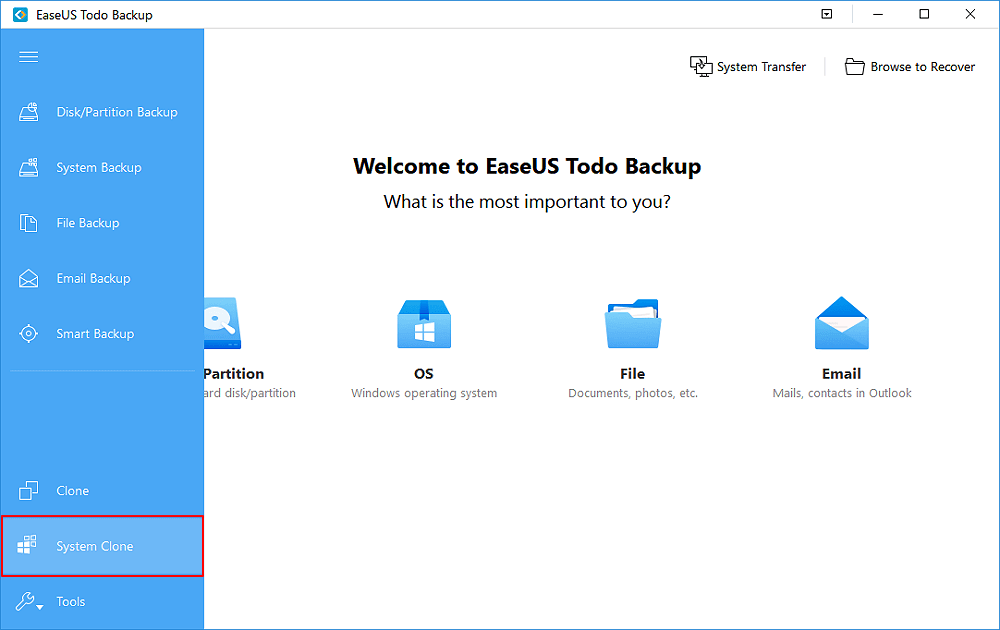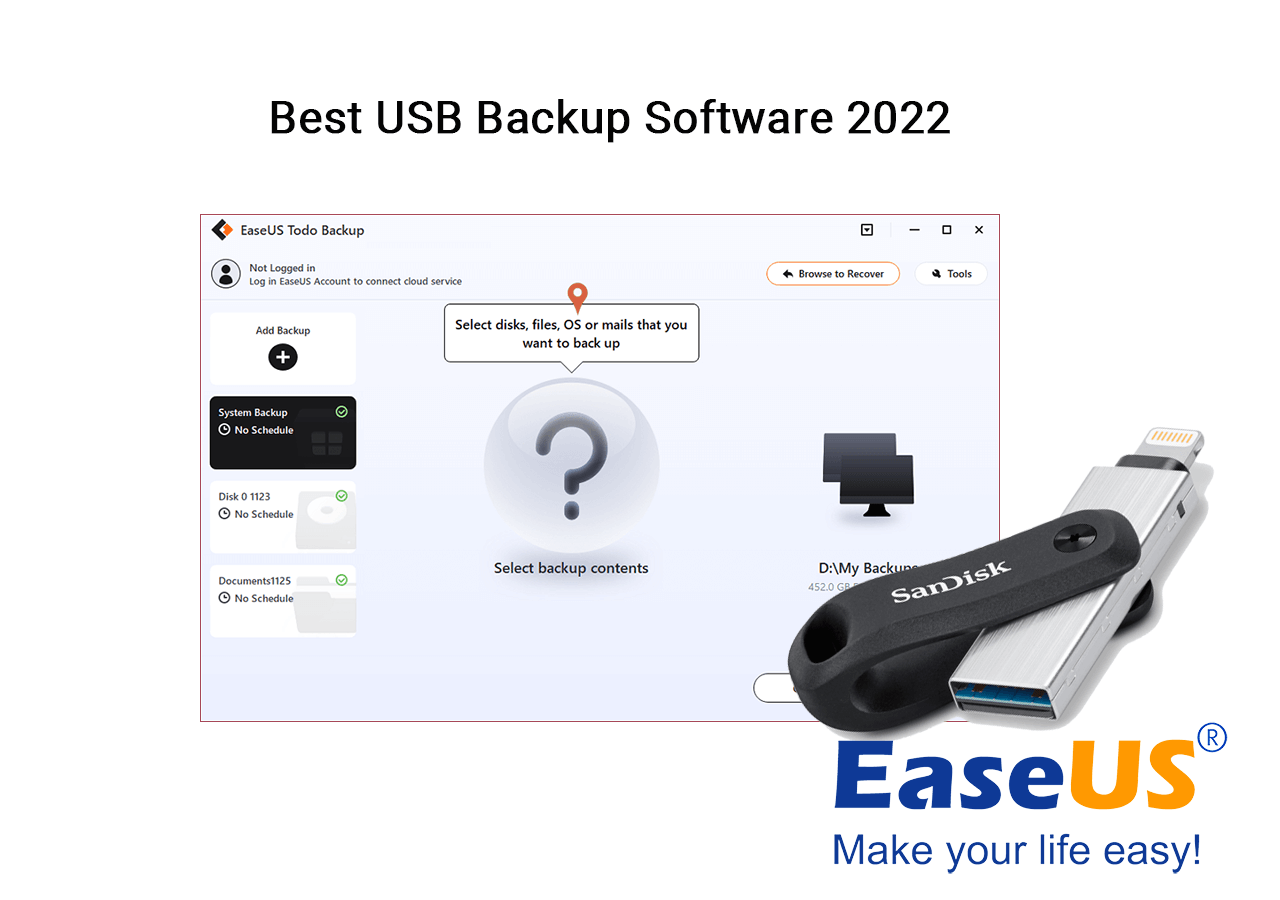Page Table of Contents
Key Takeaways:
- ✅EaseUS Todo Backup Free provides an easy way to create a system image with only four simple clicks: Create Backup - OS - Choose a backup location - Backup Now.
- ✅Backup and Restore is a Windows inbuilt utility to create a system image and backup files. You can use it to create a system image by accessing it under the pather: Contro Panel - System and Security - Backup and Restore (Windows 7)
- ✅If you are familiar with the code knowledge, you can also utilize the Wbadmin to create a Windows system image with the command line.
- ✅Adopt the 3-2-1 backup rule, incremental backups, scheduled backups, and encrypt backup strategies to ensure safe and wise data protection.
Computer data is not always secure; an extra protection layer is needed to avoid data loss. You can do backups, clones, and images to protect the data. But a system image is the most efficient, as it adds a protection layer to your data and more utility than others. This post tells you how to create a system image backup Windows 11.
Three methods will be displayed in the following content.
- Create a Windows System Image Easily with Backup Software 🔥
- Make a System Image via Windows Built-in Backup and Restore
- Backup Windows 11 to an External Hard Drive via wbAdmin
Multiple ways exist to create a Windows System Image. However, the built-in methods can be tedious and a bit confusing, considering the complexity of the process. If not done correctly, you can suffer data loss, too. So, How can you create a Windows System Image Backup safely?
1️⃣Create a Windows System Image Easily with Backup Software
EaseUS Todo Backup Free is a professional backup tool capable of making system images with just a click. Equipped with simple UI and navigation, you can make a system image and encrypt it in a safe mode easily. Along with the system image, you can make backups using this software if you want to backup specific files or disks.
As it comes with cloud storage, you can store your images, backup and, clone them on the cloud, and restore them whenever needed. It is the ideal tool for system images and bootable recovery media. Download the tool now, and make a system image of your Windows PC.
Secure Download
Step 1. Launch EaseUS Todo Backup and choose "Create Backup" on the home page, click "Select backup contents".

Step 2. Among the four available categories, click "OS" to start back up.

Step 3. The system partition will be automatically selected, you only need to select the location.

Step 4. Local Drive, Cloud, and NAS are available for you to save the backup file. You can also connect an external hard drive to preserve the system backup files.

Step 5. You can customize the settings in "Options" at the left bottom. After that, click "Backup Now", and the process will begin.
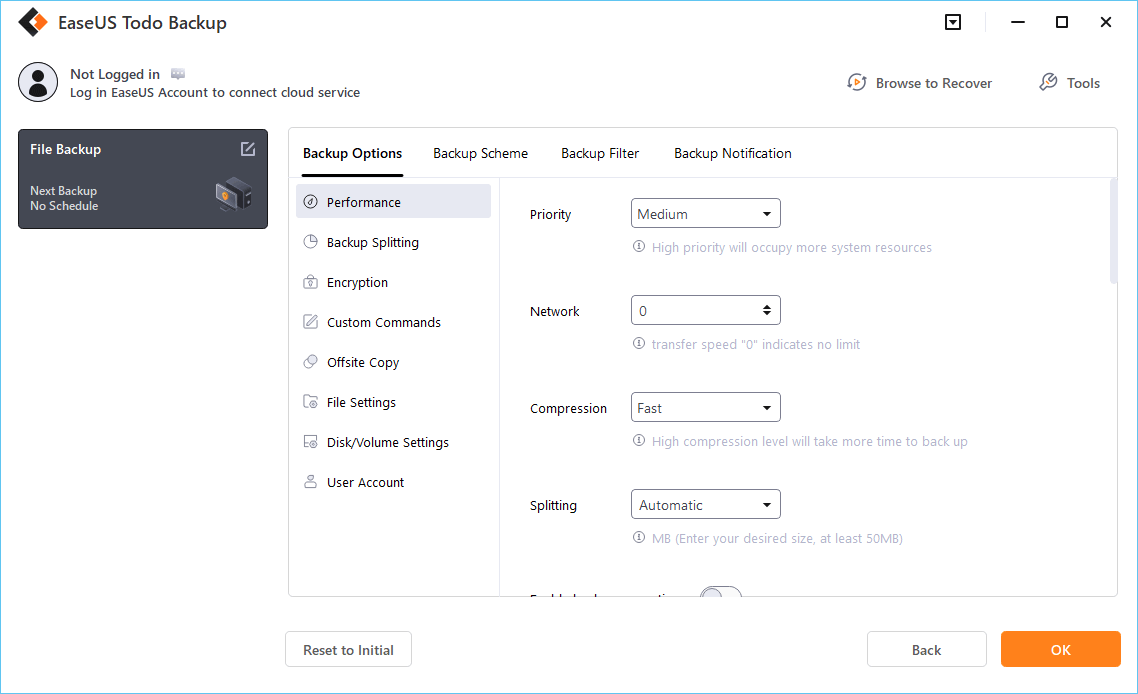
*After finishing the backup process, you can check the backup status, recover, open, or delete the backup by right-clicking the backup task on the left.
📖Further Reading: Create and Restore (Windows 10) System Image to Different Computer
Is the post helpful? Share it on your Twitter and FaceBook to help your followers protect their computers by creating a system image.
2️⃣Make a System Image via Windows Built-in Backup and Restore
Windows OS provides a built-in Backup and Restore tool to create system images. With this, you can make a system image of the entire PC. The drawback of this is you cannot backup individual files and may need a system repair disc in case of failure. If this is not taken care of, you may lose your data.
Step 1. Search for the Control Panel on your device and open it.
Step 2. Change the View by: to Large icons, and find the Backup and Restore (Windows 7). Though it says Windows 7, it also works for the 10 and 11 versions.
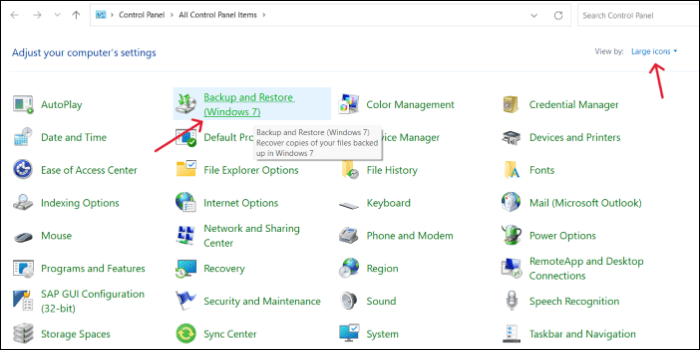
Step 3. Click on Create a system image on the left pane, and select the location or drive you want to save the system image on.

Tip: If you want to save the System Image on an external drive, format it to NTFS to avoid compatibility errors later.
Step 4. Now, confirm what all partitions or areas of the hard drive will be imaged onto the hard drive and click the Start Backup button.
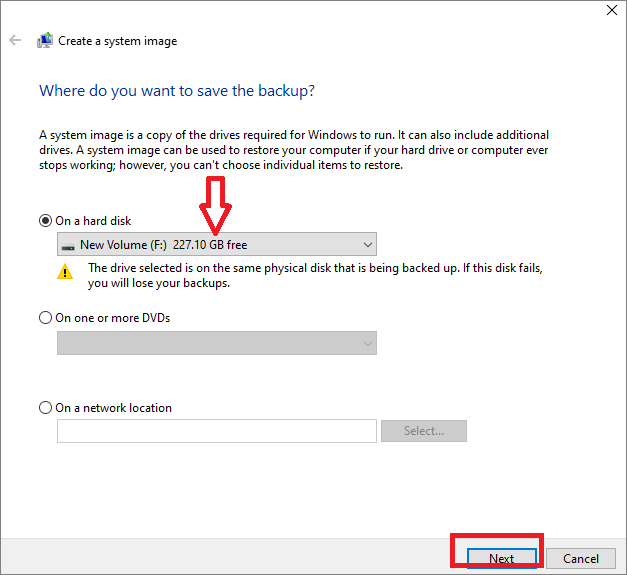
Step 5. Windows OS now creates the image backup files and saves them on the destination.
Note: If you want to create a system repair disc, you can make one. If there are any issues with the system and OS files, you can use this disc to repair them. You will need a CD/DVD to do this.
3️⃣Backup Windows 11 to an External Hard Drive via wbAdmin
Here's another method where we use the Wbadmin, the command line version of the backup and restore. This allows you to create a full backup of your system by using some commands. Let us see how we can do it.
Step 1. Click Start and enter Command Prompt. Now, run the Command Prompt as administrator.
Step 2. Enter the following command in the CMD for a full backup:
- wbAdmin start backup -backupTarget:X: -include:C: -allCritical -quiet
In the command, the X next to -backupTarget should be replaced with the drive letter of your external drive where you want to store the full system image backup.
There is another command if you want to create a backup of all connected drives to your PC.
- wbAdmin start backup -backupTarget:X: -include:C:,D:,F: -allCritical -quiet
Again, you must change the drive letters next to -backupTarget, and -include to the corresponding connected external drives.
Even if you fail to specify the correct drive numbers, the full backup will be saved to the external hard drive (or SSD), X.
What's Included in a System Image? How It Benefits You
So you already know that we create a System Image to restore the entire system, but do you know what exactly is included in the System Image?
The System Image backup includes the contents of the C: drive or boot/system drive by default in all Windows OC. But to maximize the utility and security, it captures the contents of all partitions from the drive we are backing up. To give you an idea, go to the Disk Management tool on your PC, and you will find what exactly comprises the boot drive, typically known as the C drive.

You can see these partitions in the base drive or boot drive. The EFI System Partition includes the boot loader, other drives, and OS installation capabilities. When the PC boots, this is what it reads to get the OS running up. The C volume is partitioned to run Windows, OS, apps, settings, and what you see on your PC. As the name suggests, the Recovery Partition offers a set of boot and OS files needed to start and repair the damaged boot drive/C.
System Image vs. Full Backup: What's the Difference?
System Image consists of everything on the boot or system drive, but what about the full backup, and how is it different from the system backup?
The full backup, on the other hand, is a backup method, but you can back up whatever you need. You can exclude the items you do not want and make a customized backup to restore any item you need. While both methods intend to safeguard your data, there are some significant differences between them.
- Storage: The System Image includes everything on the system, so it requires more space, and the full backup has only what we need.
- Speed: The speed of making and restoring the image or the backup depends on the size of the data you are backing up.
- Flexibility: With full backups, you can backup and restore particular files or disks depending on your needs. But with a system image, you can only choose to restore everything.
- Compatibility: A regular backup can be done on any system and can be restored on other computers. If you want to restore the system image, the restoring computer must satisfy the requirements.
🚩Related Reading: The Differences between System Image and Full Backup
Practical Tips for Windows 11 Backup
Here are a few good backup practices one can follow to ensure their data is always safe.
- 🗂️The 3-2-1 backup rule: This rule states that you should have at least three copies of your data, two copies on two different media on-site (devices), and at least one copy off-site (online such as cloud).
- 📈Incremental Backups: An incremental backup updates the changed data onto the backup from the last backup.
- ⏰Scheduling backups: You need to schedule backups every week or month to constantly update the data and protect it.
- 🔒Encrypt data: You can encrypt your backup data through some medium. Even if the data is compromised, the attacker will never be able to access the data.
Is the post helpful? Share it on your Twitter and FaceBook to help your followers protect their computers by creating a system image.
The Final Verdict
The article gives you all the details of how to create a system image backup Windows 11. From making a system image to the differences between full backups and system images alongside good backup practices. The issue with the system images of the Windows built-in facility is users may face incompatibility issues, and it is a little complex to make.
But, if you want to ease the problem and avoid the compatibility issues, the EaseUS Todo Backup is the best option. With intuitive UI and advanced algorithms, you can make a system image with just a click.
Secure Download
FAQs on System Image Backup on Windows 11
1. Does a system image backup everything?
Yes, the system image is an exact copy of the entire hard drive. It includes everything you have on the boot/system or C drive.
2. What is the best way to backup my entire computer?
A system image or clone is the best way to backup the entire computer. Cloning generally involves a bit-by-but copy of every data, and the image involves all the contents of the main partitions.
3. How often should you do a system image backup?
A good practice is to create a system image backup weekly. If the data is important, you can do it for daily backup. But if you want to update the backup, once a week is a must.
Was this page helpful? Your support is truly important to us!

EaseUS Todo Backup
EaseUS Todo Backup is a dependable and professional data backup solution capable of backing up files, folders, drives, APP data and creating a system image. It also makes it easy to clone HDD/SSD, transfer the system to different hardware, and create bootable WinPE bootable disks.
Secure Download
-
Updated by
Larissa has rich experience in writing technical articles and is now a professional editor at EaseUS. She is good at writing articles about data recovery, disk cloning, disk partitioning, data backup, and other related knowledge. Her detailed and ultimate guides help users find effective solutions to their problems. She is fond of traveling, reading, and riding in her spare time.…Read full bio
EaseUS Todo Backup

Smart backup tool for your files, disks, APPs and entire computer.
Topic Clusters
Interesting Topics

